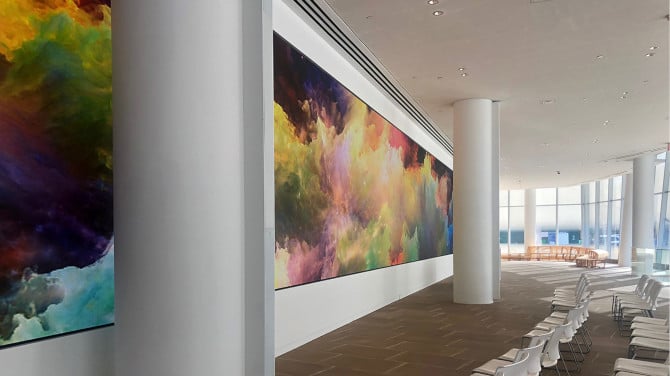Investigating the Durability of Light Emitting Diode Display Panels in Comparison to Conventional Display Technologies
Investigating the Durability of Light Emitting Diode Display Panels in Comparison to Conventional Display Technologies
Blog Article
LED wall screens have grown increasingly popular in current years, particularly in settings like schools, corporate spaces, and public spaces. These panels use LED diodes (LEDs) to create vivid and vibrant images. One of the most significant advantages of LED innovation is its longevity compared to conventional screen methods, such as cathode ray tubes (CRTs) and liquid crystal screens. Understanding the distinctions in duration and performance between these options can assist buyers make informed choices about their screen needs.
Traditional screen technologies, like CRTs, have been present for many years. They were frequently used in televisions and PC screens. However, CRTs have a limited duration, typically lasting approximately 10,000 to 20,000 hrs of operation. This means that after a couple years, consumers may observe a decline in picture quality, such as dimming or color distortion. In comparison, LED wall screens can last significantly longer, frequently exceeding 50,000 hrs. This extended duration means that consumers can experience reliable functionality without the need for regular substitutions.
Another important factor to take into account is power conservation. LED wall screens utilize less power than traditional displays, which not only benefits the ecosystem but also lowers power costs. For example, while a CRT screen may use around 100 watts of power, an LED panel can consume as little as 30 to 50 watts. This discrepancy in power consumption contributes to the total longevity of LED technology, as lower energy consumption generates minimal heat. Excess heat can harm electronic parts, leading to a additional resources shorter duration for conventional displays.
In furthermore to their extended lifespan and power conservation, LED wall panels also provide enhanced image quality. They offer more vivid colors and better differentiation, making them perfect for various applications, from marketing to learning presentations. The technology behind LED screens enables for a broader viewing angle, meaning that visuals stay sharp and vibrant even when viewed from the flank. This is a major advantage over traditional displays, which frequently experience from color distortion and reduced luminosity at broader angles.
In conclusion, the longevity of LED panel screens in contrast to conventional display methods is a key aspect for buyers to consider. With lifespans that can surpass 50,000 hours, energy conservation, and superior image quality, LED innovation provides many benefits. As technology continues to progress, LED panel screens are probably to become even more prevalent in multiple settings. Understanding these distinctions can assist individuals and entities make better choices when investing in display innovation, guaranteeing they receive the optimal worth for their needs.